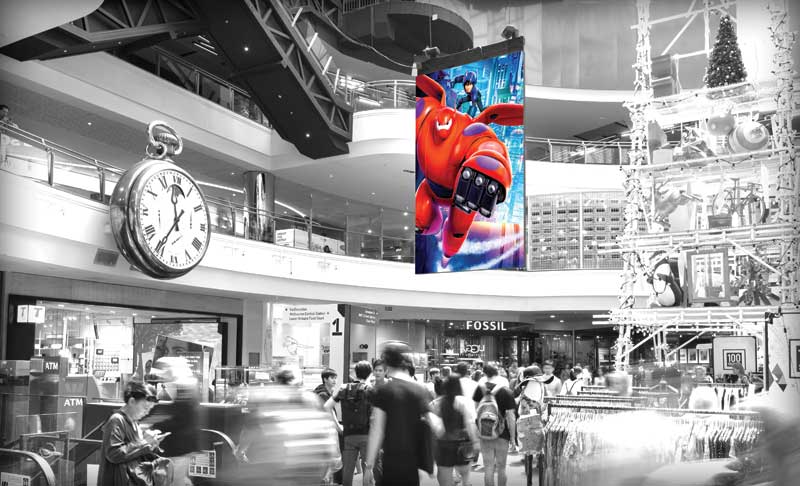By Joe’ Lloyd
Digital signage may seem like a magical technology, but it is only as effective as the content it displays, whether its purpose is to convey information, incite curiosity or inspire an emotional response. At the same time, the design and manufacture of light-emitting diode (LED) display hardware will directly affect the quality of the content’s on-screen appearance. Not every display will showcase content at the same level of precision, after all, just as not all content is created with the same level of care.
There are actually three fundamental steps involved in creating an effective LED display:
- Build high-quality hardware.
- Create unique content.
- Establish when and where the content will be seen.
Not all displays are created equal
Audiences viewing content on an LED display that appears blotchy, low-quality or ‘not quite right’ will quickly lose interest. Instead of focusing on the substance of the content, they will pay attention only to its superficial appearance.
This is a significant problem. Digital signage content is expensive to produce. No one can afford to waste resources on showing beautifully designed content on a lacklustre display.
The main reason the visual quality of content can vary from one display to another is the fact the displays are not always built under the same conditions or to the same standards. Some manufacturers pride themselves on producing high-quality LED displays, but others cut corners to reduce costs, in the hope of drawing in customers who only focus on the sticker price.
To make sure an LED display planned for installation will showcase content exactly as desired, it is worthwhile to investigate certain elements of its manufacturer’s production process. This means starting at the very beginning, when the pixels of a display are first built.

Large-format LED displays are becoming more common in busy areas because their images can be viewed from a broad range of angles and distances.
The sum of their parts
Just as a chain is only as strong as its weakest link, so too is a display only as strong as its weakest LED.
While the individual LEDs within an array may seem identical to the naked eye, they are not manufactured identically. Rather, each LED created in a given production run will exhibit tiny variances from the others in its batch, despite the fact they were all made using the same materials.
For this reason, manufactures sort newly created LEDs through a classification process that groups those that are alike. This sorting process is referred to as ‘binning.’ Generally, the two criteria used for binning are (a) colour wavelength and (b) forward voltage.
These two metrics determine the specific colour profile and brightness level of an LED. The narrower the parameters for each group, the more similar each LED’s performance will be to that of the other LEDs with which it is binned.
Displays built with LEDs from the same bin will exhibit a more cohesive appearance for content, whereas those built with LEDs from diverse bins can appear spotty and interrupted. On a meticulously binned display, for example, the image of a dark black suit will appear uniform, but on a display built with blended pixels from different bins, different shades of black and grey can appear in different parts of the image.
Due to the outsized impact of LED inconsistency on the appearance of digital signage content, the precision which binning is performed has become one of the primary differentiators of quality in today’s market. The companies that source the best and most consistent components are those that manufacture the highest-quality finished products.






